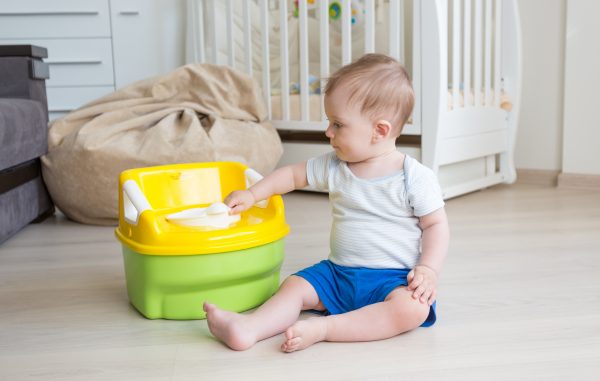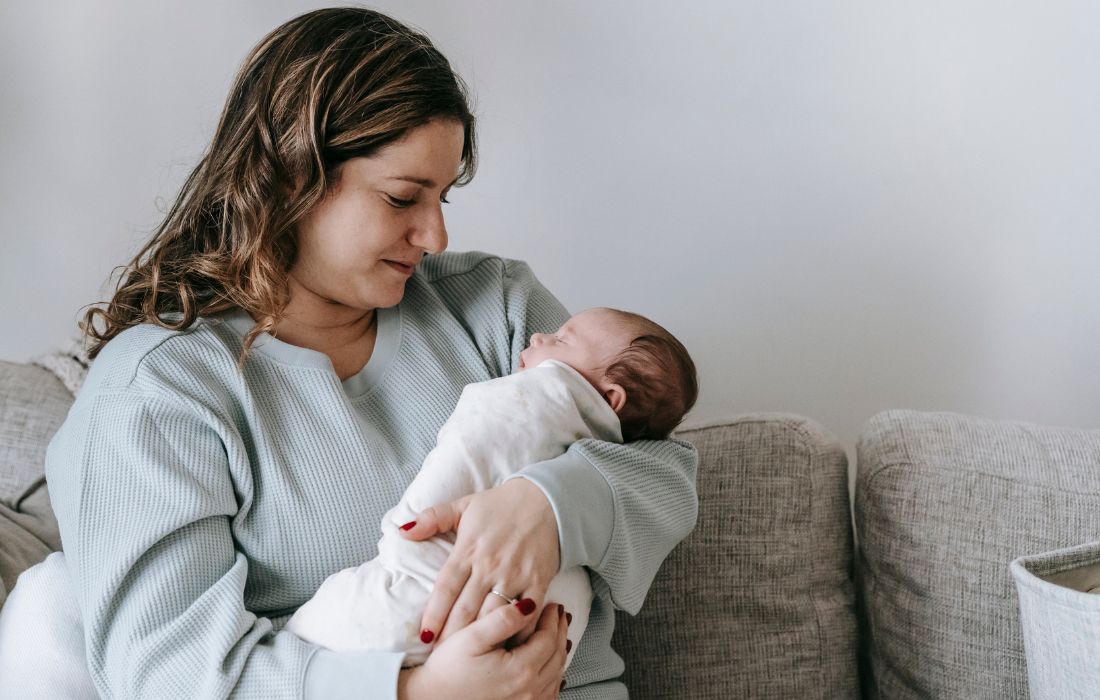When do babies learn to fall asleep on their own?
One of the most common questions parents ask is, “When will my baby learn to fall asleep on their own?” While every baby develops at their own pace, most start building this skill between 4 and 6 months of age. During this time, their circadian rhythms mature, allowing them to sleep longer stretches at night. This is the perfect opportunity to gently teach your baby the essential skill of self-soothing—a key milestone for developing healthy, independent sleep habits.
How to teach baby to go to sleep on their own
Helping your baby learn to fall asleep independently is a gradual process that requires consistency and patience. Here’s how you can get started:
- Start at Bedtime: Begin by teaching independent sleep at bedtime, when your baby is naturally most tired and receptive to new routines.
- Put Them Down Drowsy, Not Asleep: Place your baby in their crib when they’re calm and drowsy but still awake. This encourages them to associate the crib with falling asleep on their own, rather than relying on external aids like rocking or feeding.
- Stay Consistent: Choose a sleep training method—like the Sleep Lady Shuffle or another approach—and stick to it. Babies thrive on predictability, and consistency helps them feel secure as they adjust to new sleep habits.
Remember, learning to fall asleep independently is like any other skill, such as crawling or walking. It takes time, practice, and patience to master.

Can you sleep training from 6 months and older?
Yes, you can absolutely start after 6 months! In fact, this age is an excellent time to begin because most babies are developmentally ready to sleep for longer periods without nighttime feedings. Their growing brains and bodies are better equipped to learn and practice falling asleep independently.
If your baby is older than 6 months, it’s helpful to focus on nighttime sleep first. Nighttime training typically progresses faster than daytime naps and lays a strong foundation for overall sleep improvement. Once your baby is consistently sleeping well at night, you can shift your attention to nap training. Not sure if your baby is ready? Not sure if your baby is ready? Here’s when babies typically develop self-soothing skills and how to support the process gently and how to support the process gently
Do you sleep train for naps too
Naps are an essential part of your baby’s overall sleep routine, and nap training is a vital step in fostering healthy sleep habits. Here’s how you can approach nap training effectively:
- Begin After Nighttime Training: Focus on nighttime sleep first to build a strong foundation. Once your baby is sleeping well at night, they’ll be better prepared to adjust to nap training during the day.
- Apply the Same Method: Use the same method for naps that you used for nighttime sleep. This consistency helps reinforce your baby’s understanding of what’s expected during sleep times.
- Account for Daytime Challenges: Daytime naps can be trickier because of natural distractions like light and noise. If your baby struggles to nap, consider temporary solutions like motion-based sleep (e.g., stroller or car rides) to prevent overtiredness. Once their overall sleep routine improves, you can revisit nap training.
Nap training often takes more time and patience than nighttime training, but it’s worth the effort. A well-rested baby during the day is less cranky, falls asleep more easily at bedtime, and typically sleeps better through the night.

Sleep training methods 6 to 11 months
| Sleep Training Method | Description | What Kim Would Say | Key Considerations for Parents |
|---|---|---|---|
| Gentle Methods | Gradually reduce parental involvement in sleep, such as “fading” or her Sleep Lady Shuffle. Parents stay close and provide reassurance while teaching babies to self-soothe. | “This is a wonderful option for families who prefer to minimize tears and remain present during the process. It takes patience and consistency but allows parents to build their child’s sleep skills gently.” | – Ideal for families who want a gradual, hands-on approach. – Requires time, patience, and consistency. |
| Ferber Method | Timed check-ins with controlled crying intervals. Parents provide brief reassurance while encouraging self-soothing. | “For families who can tolerate some crying, this method can work, but it requires a clear plan and consistency. I encourage parents to listen to their instincts—if it doesn’t feel right, a gentler method like the Shuffle might be better.” | Can be emotionally challenging for some parents annd baby . – |
| Cry It Out (CIO) | Full extinction—baby is left to cry without any intervention until they fall asleep. | “This approach is not aligned with my philosophy. While some families see results, I believe it can be too stressful for both the baby and parents, especially during developmental stages like 8 months, when separation anxiety peaks.” | – Involves significant crying. – Often emotionally difficult for parents. – Not suitable for families who prefer to provide comfort during the process. |
| Chair Method | Parents sit near the crib and gradually move farther away over days or weeks. Offers reassurance while fostering independence. | “This approach aligns well with my Sleep Lady Shuffle. It offers a gradual transition that allows parents to reassure their baby while fostering independence. Consistency is critical, and parents need to feel comfortable with the process.” | – Slower but effective for those seeking a supportive presence. – Requires commitment and avoiding new sleep crutches (e.g., patting). |
| Pick Up/Put Down | Parents pick up the baby to soothe and place them back in the crib once calm, repeating as needed. | “This can be a good fit for parents who feel more comfortable actively soothing their baby. However, some babies may find the frequent picking up and putting down overstimulating, so it’s important to watch your child’s cues.” | – Provides active reassurance for parents. – Can overstimulate babies who need consistency. – Requires flexibility based on your baby’s temperament. |

Sleep training 6-month-old
By 6 months, most babies are ready to start. Their circadian rhythms are established, and many can sleep longer without feeding. The best time to begin depends on your baby’s temperament and your readiness (challenging too during a 6 month sleep regression) to commit to consistency—it’s as much about your preparation as their age The ideal time to start is between 4–6 months, when most babies no longer need frequent night feedings and can learn to self-soothe
What about a 6-month-old breastfed baby
Breastfeeding won’t interfere with sleep training. To help your baby learn independent sleep:
- Separate Feeding from Sleep: Nurse earlier in the bedtime routine, not as the last step.
- Drowsy but Awake: Place your baby in the crib calm but awake to prevent nursing-to-sleep dependence.
Check with your pediatrician to ensure your baby gets enough calories during the day. If night feedings are still needed, keep your approach consistent and gradually reduce feeding times or introduce a dream feed
Nap training 6-month-old
Nap training often takes longer than nighttime sleep, but the same principles apply:
- Start With the First Nap: Babies are usually more receptive to training earlier in the day.
- Keep It Consistent: Use the same method for naps that you do at night.
- Follow Awake Windows: At 6 months, naps should follow 2–3 hours of wakefulness. Watch for signs like eye rubbing and aim to put your baby down before they’re overtired.
If naps are a struggle, temporary motion sleep (e.g., stroller rides) can prevent overtiredness while you work on independent sleep.
Crib training 6-month-old
To ensure your baby feels safe and secure in their crib:
- Make the Crib a Happy Place: Let your baby play in the crib during the day to associate it with comfort.
- Bedtime Routine: Use a calming routine (e.g., bath, feeding, story) to ease transitions into the crib. Create a 6-month sleep schedule.
- Stay Consistent: Stick to your chosen sleep method for both bedtime and night wakings.
How to put 6-month-old down for nap
- Mini Bedtime Routine: Create a shorter version of your bedtime routine for naps.
- Follow Wake Windows: Put your baby down after about 2.5 hours of wakefulness to avoid overtiredness.
- Drowsy But Awake: Lay your baby down calm but awake, and use your chosen sleep method if they fuss.

Sleep training 7-month-old
At this age, your baby is likely ready as they are developmentally capable of learning to fall asleep independently, but you may notice challenges from the 7-month sleep regression caused by new skills like sitting or crawling. This regression is temporary and can make consistency in training even more important to help them through it
Why 7 Months Is Unique
- Increased Awareness: Your baby now recognizes routines, so consistency is more important than ever.
- Mobility Milestones: Rolling, sitting, or pulling to stand may disrupt sleep—practice these skills during the day.
- Separation Anxiety: This often peaks at 7–8 months, so offer reassurance without creating new sleep crutches.
Steps to Sleep Train a 7-Month-Old
- Bedtime Routine: Use calming activities (bath, massage, story) and aim for sleep by 7–8 PM. Build these habits into your 7 month sleep schedule.
- Drowsy But Awake: Always place your baby in the crib awake, teaching them to fall asleep on their own.
- Choose a Sleep Training Method:
- Sleep Lady Shuffle: Gradual reassurance, moving farther from the crib over time.
- Gentle Methods: Options like pick-up/put-down that combine soothing with independence.
- Avoid harsh methods like cry-it-out, if they don’t align with your family’s values.
- Consistent Wake Time: Keep mornings consistent around 7–7:30 AM to regulate their body clock.
Sleep training 7-month-old breastfed baby
- Separate Feeding From Sleep: Move feeding earlier in the bedtime routine (e.g., nurse, then read a book or sing a song).
- Check Daytime Calories: Ensure your baby is getting enough milk and solids during the day—most 7-month-olds don’t need night feedings.
- Plan for Night Wakings:
- Keep one scheduled night feeding if needed, always at the same time.
- Gradually shorten nursing sessions to phase out overnight feeds.
- Comfort Without Feeding: Soothe verbally or with light touch for non-hunger wakings to teach self-soothing.

Sleep training 8-month-old
By 8 months, most babies are ready to sleep through the night and follow a consistent schedule. However, developmental milestones like crawling or pulling to stand, and separation anxiety (which peaks around this time) or the 8 month sleep regression, can make sleep more challenging
Should 8-month-old sleep through the night
Many 8-month-olds are capable of sleeping 10–12 hours at night without feedings if they are:
- Eating Enough During the Day: Your baby is getting sufficient milk or formula and solids.
- Healthy and Growing Well: No medical concerns require night feedings.
- Waking From Habit, Not Hunger: If your baby wakes at the same time every night and doesn’t finish a feeding, it may be a habit.
How to Sleep Train an 8-Month-Old
- Bedtime Routine: Create a calming, consistent routine (e.g., bath, reading, and cuddles) 30 minutes before bedtime. Aim in your 8-month sleep schedule for your baby to sleep by 7–8 PM.
- Drowsy But Awake: Place your baby in the crib calm and drowsy, so they learn to fall asleep independently.
- Choose a Gentle Method:
- Sleep Lady Shuffle: Stay near the crib for reassurance, gradually moving farther away over several nights.
- Pick Up/Put Down: Soothe your baby by picking them up briefly, then placing them back in the crib awake.
- Avoid cry-it-out methods if they feel too harsh for you or your baby.
- Consistent Wake Times: Wake your baby at the same time daily (around 7 AM) to regulate their body clock.
- Night Wakings:
- Reassure without feeding unless necessary.
- Stick to the same approach each time to set expectations.
Sleep training 9-month-old:
By 9 months, coaching helps establish consistent sleep patterns, even as developmental milestones like pulling to stand or separation anxiety can cause disruptions. Focus on strengthening nighttime and nap routines for long-term success.
Nap training 9-month-old
- Transition to Two Naps: Aim for a morning nap around 9:30–10:00 AM and an afternoon nap around 2:30–3:00 PM. Total daytime sleep should be 2–3 hours in the 9-month sleep schedule.
- Pre-Nap Routine: A shorter version of your bedtime routine (diaper change, story, cuddle) signals sleep time.
- Consistency Is Key: Use the same coaching method for naps and bedtime to reinforce self-soothing skills
Sleep training a 10-month-old
By now, some babies can sleep independently for 11–12 hours at night and take 2–3 hours of daytime sleep split between two naps. Temporary disruptions may occur due to teething, separation anxiety, 10-month sleep regression or mobility milestones.
Sleep training a 10-month-old breastfed baby
- Separate Feeding From Sleep: Nurse earlier in the bedtime routine to avoid the feeding-to-sleep association.
- Handle Night Wakings: Gradually reduce the number or length of nighttime feeds with guidance from your pediatrician. Use a consistent approach like the Sleep Lady Shuffle to soothe your baby without nursing.
- Drowsy But Awake: Always place your baby in the crib calm but awake to encourage independent sleep skills.
Sleep training 11-month-old
At 11 months, your baby still needs 11–12 hours of nighttime sleep and 2–3 hours of daytime sleep across two naps. Sleep regressions and boundary testing may emerge, making consistency more important than ever.
Tips for Sleep Coaching an 11-Month-Old:
- Stick to Routines: Reinforce predictable 11-month sleep schedule, bedtime and nap routines to help your baby recognize sleep cues.
- Address Sleep Crutches: Transition away from rocking, feeding, or holding by encouraging self-soothing with methods like the Sleep Lady Shuffle.
- Handle Separation Anxiety: Briefly comfort your baby during wakings, but avoid introducing new habits like rocking or feeding back to sleep.




